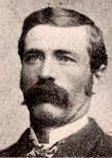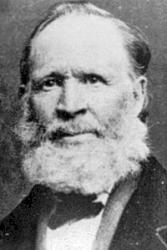Planning worship?
Check out our sister site, ZeteoSearch.org,
for 20+ additional resources related to your search.
- |
User Links
Person Results
David Hugh Jones
1900 - 1983 Person Name: David Hugh Jones, 1900-? Arranger of "BACK TO ZION" in The Cyber Hymnal David Hugh Jones (1900-1983)
Born: 1900, Jackson, Ohio.
Jones attended the Guilford Organ School, New York City (graduated 1920), and the American Conservatory, Fontainebleau, France, and received honorary degrees from Washington and Jefferson, and Beaver Colleges. In 1924, he became a Fellow of the American Guild of Organists. He played the organ at churches in Portsmouth and Dayton, Ohio; and in New York City, Rome, and Brooklyn, New York. From 1934 until retiring in 1979, he was the Miller Chapel organist and choir director at Princeton Theological Seminary, New Jersey. In 1937, he founded the seminary’s touring choir, which sang at thousands of churches in America, Canada, Cuba, Mexico, Colombia, Venezuela, the Caribbean islands, Japan, and Korea.
--www.hymntime.com/tch/
David Hugh Jones
Orson Pratt Huish

1851 - 1932 Person Name: Orson Platt Hugh, 1851-1932 Composer of "BACK TO ZION" in The Cyber Hymnal Born: September 9, 1851, Blaenavon, Monmouth, Wales.
Died: December 4, 1932, Payson, Utah.
Buried: Payson, Utah.
At age nine, Huish emigrated with his mother and siblings to join his father in St. Louis, Missouri. In 1861, the family went to the Utah Territory and settled in Payson, where Huish worked in farming and ranching as a youth. He later ran general stores times in Moab, Utah; Eugene, Oregon; and Albuquerque, New Mexico. He also opened Huish Drug.
Huish was a composer, but was also trained in commercial photography, making some contributions in this field and operating the firm Huish and Hinshaw. They did most of their work in Utah and Arizona.
In 1880, Huish formed the "Huish Band" with his brothers Edward, Joseph, Frank, James, and Frederick, and their sister Florette. They traveled throughout the Utah Territory, often performing for dances. Huish had been trained to perform in a band with another Payson resident, John D. Stark. Huish wrote over 300 songs, most of which are unpublished. He also write the Payson High School song, "The Silver and the Green."
--www.hymntime.org/tch
Orson Pratt Huish
Thomas Davenport

1815 - 1888 Person Name: Thomas Davenport, 1815-1888 Author of "Come, All Ye Sons of God" in The Cyber Hymnal Thomas Davenport was born April 1, 1815 in Brampton, Derby, England. He was baptized April 21, 1847 while his wife, Sarah Burrows Davenport, was baptized a few weeks later on June 8, 1847.
His obituary states that “he was set apart as a traveling elder to preach the gospel, Nov. 16, 1847” and he continued in that capacity for 12 more years.
His obituary states, “He (Thomas worked six days each week at his trade of potter and traveled and preached on Sunday.”
Through his efforts in Derbyshire and Nottinghamshire, he founded several branches of the church, including Bolsover and Derbyshire. He traveled on foot, an estimated 1,849 miles, and helped bring 50 persons into the church, his family history states.
Some time in 1849, Thomas made the decision to come to America and join members of the LDS Church in Utah. Arriving in New Orleans on Dec 24, 1849, he began keeping a journal. He notes that his ship continued sailed north up the Mississippi River on Dec. 30, arriving in St. Louis, Missouri on Jan. 11, 1850. He then continued west to Pottawatomie, Iowa, residing in Key Creek during the winter of 1851.
On June 20, 1852, his family left Key Creek to join up with a 16th company of Saints led by Captain Uriah Curtis, which consisted of 365 church members, according to the family history.
Thomas’s family and members of the 16th company arrived in the Salt Lake Valley on Oct. 8, 1852. Thomas then records that he was counseled to head south to Iron County and start a pottery trade.
Despite having just traveled 1,500 miles across the Great Plains, Thomas and his family then traveled another 250 miles to the Little Salt Lake Valley, arriving in Parowan on Nov. 4, 1852.
Parowan was first settled on Jan. 13, 1851 by a group of pioneers headed by LDS apostle George A. Smith, according to The History of Iron County Mission Parowan, Utah, compiled by Luella Adams Dalton.
In Parowan, the Davenports moved into a house owned by a Brother Moss. After 16 days, “they moved into an adobe house acquired in trade from a Brother Glispy for the three steers and wagon Thomas had brought across the plains. Later he traded for a log cabin and ten shares of land. The land he farmed while getting established in his pottery business,” the Davenport history states.
Eventually, Davenport’s pottery wares “could be seen in every home all thru the southern settlements,” and his pottery came to be called “Davenportware. Each piece could be identified as his thumbprint was placed in the workable clay before it was fired,” the family history states.
Davenport was also involved with farming, in addition to the pottery business. In the 1860s, he was also involved in an effort to mine coal in Summit, though the venture was less than successful.
At the time of his arrival in Parowan, Davenport’s family consisted of his wife, children, William, 15, John, almost 8, Sarah Ann, 5, and James, 1. Sarah gave birth to another son on Feb. 14, 1854, named Orson Valentine, but the child died from flu on Aug. 26, 1854.
“Family activities centered around gardening, soap making, selling pottery and music,” the family history states.
Davenport also became heavily involved in helping to raise funds for building the Rock Church in Parowan. He also is believed to have served as a director of the Parowan Branch of the United Order, and as alderman, city councilor, and treasurer of Parowan City.
The United Order in Parowan lasted only from March 9, 1875 to 1876 since most of the city residents did not enter into the communal organization.
Meanwhile, Davenport’s church career was spent doing missionary work and doing temple ordinance work for deceased family ancestors. He served as a counselor to two ward bishops and 10 years as a member of the Parowan Stake High Council. He also sang in the ward choir “rarely missing a practice or meeting,” the Davenport history states.
“Genealogy and temple work also occupied his time with ordinance work being conducted on behalf of his kindred dead first in Salt Lake at the Endowment House and later at the dedicated St. George Temple,” the family history states.
Thomas died Jan. 22, 1888 in Parowan while his wife, Sarah Davenport died May 20, 1882 in Parowan, according to a Feb. 2, 1888 Deseret Evening News obituary.
--www.kcsg.com/view/full_story/22047201/article-SOUTHERN-UTAH-MEMORIES (excerpts)
Thomas Davenport


 My Starred Hymns
My Starred Hymns


